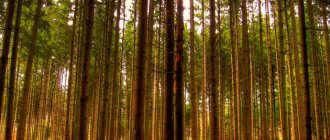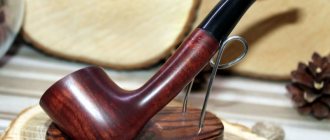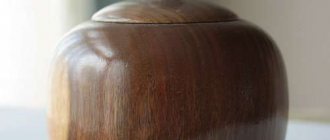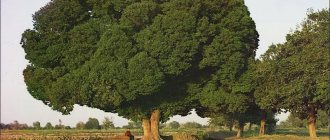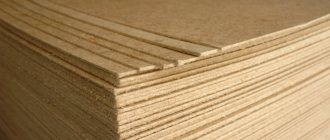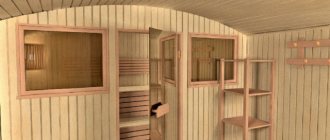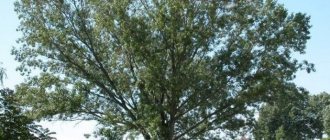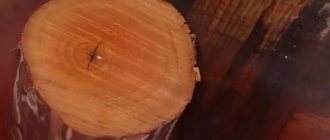The wood of this tree is often called a living gem. The color of wood can be different, black, greenish, reddish and light shades. From the point of view of woodworking, ebony wood includes varieties of trees that belong to the persimmon genus. Ebony wood is precious and the most expensive in the world. This refers to wood that grows in India, Southeast Asia, Madagascar, Ceylon, East and West Africa, and Sri Lanka.
Some types of persimmon grow in the Caucasus. Widely used for landscaping apartments. They are planted and grown in pots. Referred to as bonsai.
Interesting Facts
Undoubtedly, everyone knows the famous horror story about the ebony tree in the black forest. Indeed, over time, many mystical stories and legends have appeared around ebony. Figurines made from this wood could be used in two ways: to protect oneself and one’s home, and for rituals of black magic. This tree could give health and kill, energy is extracted from its raw materials, and the image of the tree is the national symbol of Tanzania. So what else does ebony hide?
Among all the properties of ebony, of which it has a large number, there are also qualities that are sometimes mutually exclusive. It can also go by different names - mukelete, mpingo, zebra wood (ZebraWood), music tree (TreeofMusic), mugembe, ebony tree. Among these names there are those that indicate the nature of the material, denoting its rather fantastic properties.
Ebony tree, mystically attractive, has long attracted people, so a large number of legends and beliefs have always been born around it. According to Pausanias, a scientist from Ancient Greece, the ebony tree is not fruitful, has no leaves, is not remarkable in appearance, but has large roots, which are used by the Ethiopians.
Medicine
Now you can find data that says that the roots of this tree are still used in medicine. A decoction of them is taken as an anesthetic for patients with hernia and abdominal pain. The bark is commonly used for diarrhea, and the smoke is inhaled by burning the roots of the ebony tree to relieve headaches and treat bronchitis.
Even during the reign of the pharaohs, ebony was widespread in Ancient Egypt. So, in the tomb of Tutankhamun, figurines carved from him were found. Also found were Egyptian tablets (analogous to a customs declaration) allowing the transport of ebony from East Africa, and a shipment of wood on a galley that sank in the East Mediterranean Sea.
Legends
Due to the fact that the density of the tree is quite high (approximately 1200-1300 kg/m3) and it is very hard, ebony easily sinks in water. These properties made the material truly magical. By the way, figurines and small objects made of wood served as talismans and amulets, and their owners believed in enhancing properties, and also considered them a symbol of courage and courage.
According to the legends of the ancients, ebony contains powerful energy, the control of which required great skill. The ability to give off a significant amount of heat has also found its application in everyday life. For example, when burning wood raw materials, the thermal energy was so high that the dishes simply could not stand it and began to melt. And the tribes of Africa made charcoal from ebony. Not only were people aware of the properties of ebony as an energy source, but also animals understood that to obtain greater strength they needed to eat leaves and twigs.
Exotic breeds
Precious wood species due to their strength, hardness and high scratch resistance. Such wood can be so hard that it is difficult to hammer a nail into it, and this is by no means a fantasy.
Among the main representatives:
- Doussey;
- Kumara;
- Merbau;
- Teak;
- Iroko;
- Ipe;
- Wenge;
- Bangkirai;
- Denya.
Definition and properties
Ebony , or Eben - black (or black with stripes) wood of some tropical trees of the genus Persimmon (Diospyros), growing in the tropical rainforests of Western, Central and Eastern Africa, South and Southeast Asia, on the islands of the Indian Ocean, in monsoon forests India and the island of Ceylon.
Heartwood without distinguishable annual rings is very hard and heavy and is one of the most valuable tree species. Yellow-gray sapwood, which is removed from the tree immediately after felling, can occupy up to 70% of the trunk and is never sold for sale as it is considered unsightly.
Ebony grows very slowly - centuries pass before the tree grows to commercial size. Due to its extremely slow growth, ebony wood acquires enormous density - up to 1300 kg/m³ at a humidity of 15%. This wood sinks in water.
Wood is demanding in terms of drying conditions; after drying, it loses a lot in volume. Contains a large amount of essential oils, therefore it is resistant to environmental influences, changes in humidity and temperature, does not rot, and is resistant to damage by insects, even termites.
Types and varieties of ebony
Ebony wood is divided into varieties depending on the type of plant that is its source:
Cameroon ebony - wood of the species Diospyroscrassiflora Hiern; comes from Africa and is the most common variety of ebony on the market, usually deep black in color or with gray streaks. It is characterized by pronounced open pores, as a result of which it is valued significantly lower than other finely porous varieties.
Ceylon ebony - wood of the type Ceylon ebony, or Black ebony (DiospyrosebenumJ.Koenig); has the best quality: very hard (twice as hard as oak), polishes well (after polishing it becomes perfectly smooth), practically without visible pores, resistant to termites and water. In the 16th–19th centuries, the best furniture was made from this type of ebony.
Madagascar ebony is wood of the species Diospyrosperrieri Jum.; has a dark brown color, very small pores, is resistant to termites and water, density is about 1000 kg/m³.
Makassar ebony is a wood of the Diospyroscelebica Bakh species. (Indonesia); considered a “colored” ebony, its sapwood is yellowish-white and the heartwood is black with a very characteristic pattern of light yellow and brown stripes; The wood is very dense and resistant, dust causes irritation to the skin, eyes and lungs (dust from other ebony too). Density ranges from 1100 to 1300 kg/m³.
Mun ebony - wood of the species DiospyrosmunA.Chev.; comes from Laos and Vietnam and is similar in coloring to Makassar ebony.
Moon ebony is wood from the Mabolo species (Diospyros blancoi A.DC.); An extremely rare variety of black ebony. Homeland - Philippines, now found only in the impenetrable forests of Myanmar.
Moon Ebony
This is the only variety among ebony trees with light-colored wood. The wood texture is very beautiful. When cut, it has a white color with greenish streaks. After drying, the wood acquires a golden-yellow color with black streaks, veins and stripes. Sometimes stains and stripes can have other shades, for example, bluish, greenish, chocolate. Moon ebony is prohibited from cutting and export. Myanmar rarely sells quotas for small shipments. Trees allowed for felling are between 400-450 and 1000 years old. The fact that the ebony tree turned out to be lunar is determined as the tree is cut down, since outwardly it is indistinguishable from other types of ebony trees.
Ebony wood processing
Processing ebony wood is a separate topic. This is a very labor-intensive process. Poor sawing and cutting. This job requires very sharp tools. But during the work, chips and cracks practically do not form. It is unlikely that it will be possible to saturate ebony wood with any liquids. But it lends itself to polishing very well. By polishing you can achieve an almost mirror-like shine.
By hot steaming you can make ebony wood that can be bent quite well.
Due to its fantastic physical characteristics, ebony wood does not require additional treatment with antiseptics or impregnations.
Subscribe to our Yandex.Zen channel
Advantages and application
Advantages of ebony
The structure of wood and its color have always attracted man; he sought to use this valuable quality in various ways. The material is extremely durable and resistant to any external influences. Therefore, various insects, such as termites, avoid it. When polishing such material, you can easily obtain a completely smooth surface. Despite the fact that wood is always associated with warmth and comfort, the appearance of ebony after polishing is more reminiscent of metal, and it is very cold to the touch.
Application for making musical instruments
Oboes, clarinets and flutes are made from ebony, as the material is very dense and resists water well. Ebony material is also suitable for making piano keys, guitar parts (necks and handles), as well as shells. The peculiarity of using such necks on guitars is associated with the ability to transfer the center of gravity of the entire instrument, therefore this quality is especially valued among professional musicians. The polished ebony shell does not produce any extraneous sounds that can occur when a pick accidentally jumps off the string. The neck is not subject to severe abrasion, and the lacquer plates on its surface hold up much better.
Ebony also becomes the basis for the manufacture of chess sets, the price of which can reach high limits due to its exclusivity. Basically, a group of black figures are cut out of it. It is also possible to produce knife handles and other souvenirs.
The use of ebony in furniture production
But the use of ebony in furniture production requires separate consideration. Already in the 17th century, this material was used in veneering and inlay. Ebony and mahogany became most widely used in 1733, when the cost of importing this material was significantly reduced. The beginning of the 19th century brought a new round of interest in this material.
At this time, a fashion was being formed for stylization of other, in particular, eastern cultures, for example, Roman, Egyptian, Greek and many others. In this regard, curule chairs are becoming especially popular. Ebony wood was used for their manufacture, so while maintaining visual weightlessness and grace, the structure remained extremely durable. Now this material is also actively used in the furniture industry due to its unique qualities.
Similar to the situation with mahogany, ebony was also often subject to imitation or counterfeiting. To determine the authenticity of an ebony product, there is a fairly simple method: take the object in your hand and feel its heaviness. A craft made from natural material, even a small one, will weigh quite a lot.
A wave of counterfeits of ebony products was generated by a very high interest in the culture of African peoples.
Many designers and artists drew inspiration for themselves from the culture of Africa and often stylized their works to match the expressive on the one hand and laconic on the other hand sculpture of this region. In this regard, Makonde sculpture requires special attention, for which ebony is used.
Ebony
This is a special black wood (or black with stripes. The older the tree from which the wood was obtained, the more valuable it is.
There are several varieties of this wood. The most famous is Cameroonian ebony , black. It has one drawback - open pores. Lunar ebony is especially valuable . The most expensive cues in the world are made from it.
This is a piece of goods and costs a lot of money. Its cost is also so high because the wood is too dense and dulls any cutting woodworking tool.
The cost of ebony can vary, depending on the variety, but on average from 10 thousand per 1 cubic meter. Furniture and musical instruments are made from it. Previously, cutlery handles, door and window handles, and even knitting needles and hooks were made from this wood.
Amaranth
Peltogyne
wood which grows in America. Its other name is purple tree . At first, amaranth is dark brown, but when exposed to air it turns purple. It is valued for this color.
When exposed to ultraviolet light, the wood turns brown again. Previously, it was used to decorate furniture and small items were made from it. Now floor coverings are made from amaranth, as are still furniture, fittings, etc. It costs about 12 thousand dollars per cubic meter.
Dalbergia
Dalbergia is a genus of woody plants that can be found in Africa, Asia and South America. The wood produced from it is called rosewood .
Its other name is rosewood . Already from the name it is clear that it is pink, but sometimes it can be brick-red, or even chocolate-colored with dark veins.
The most expensive parquet and furniture are made from this wood. Often used to decorate cabins, liners and carriages. Rosewood is used to make xylophone keys or other parts of musical instruments.
Valuable wood is used to make chess, kitchen utensils and canes. 1 cubic meter of this wood costs more than 10 thousand dollars.
Pink ivory or Umnini
An evergreen, sometimes deciduous tree that grows up to 15 m in height, can be found in South Africa. This is Umnini or Pink Ivory .
Among the Zulus it was called the " royal tree ". Until the end of the 19th century, only those who belonged to the Zulu royal family could decorate themselves with products made from its wood; everyone else could pay for it with their lives, including strangers.
Valued for its unique wood. It is hard and its properties are close to ivory (hence the second name). Expensive items, cues, and musical instruments are now made from it. Sculptures, bundles of knives, chess pieces.
Wood is very expensive, about 8 thousand dollars per cubic meter.
Agar is a valuable aphrodisiac
Agarwood belongs to the genus Aquilaria. This is a species of woody plants of the Volifaceae family. It is also known as:
- aloe;
- eagle;
- heavenly;
- Kalambak.
It grows in tropical forests. This is an evergreen plant that loves humid climates. More than 10 species of this tree are known. It has long been mined to obtain a valuable aromatic substance. Its wood is impregnated with resins. In the East, these resins are among the most expensive aromatic substances. They are used to make perfumes and medicines. Wood is used to make expensive furniture and jewelry.

